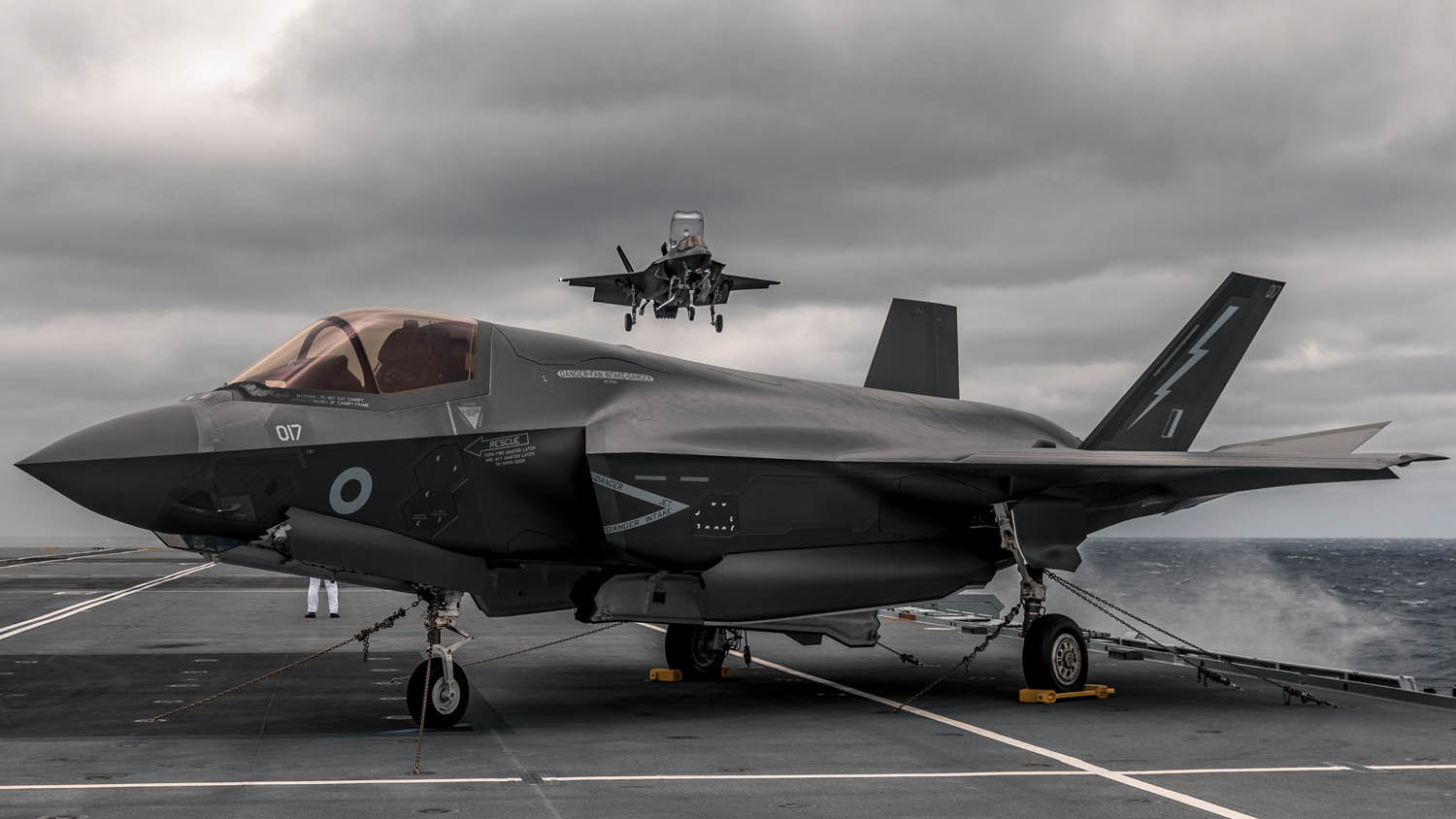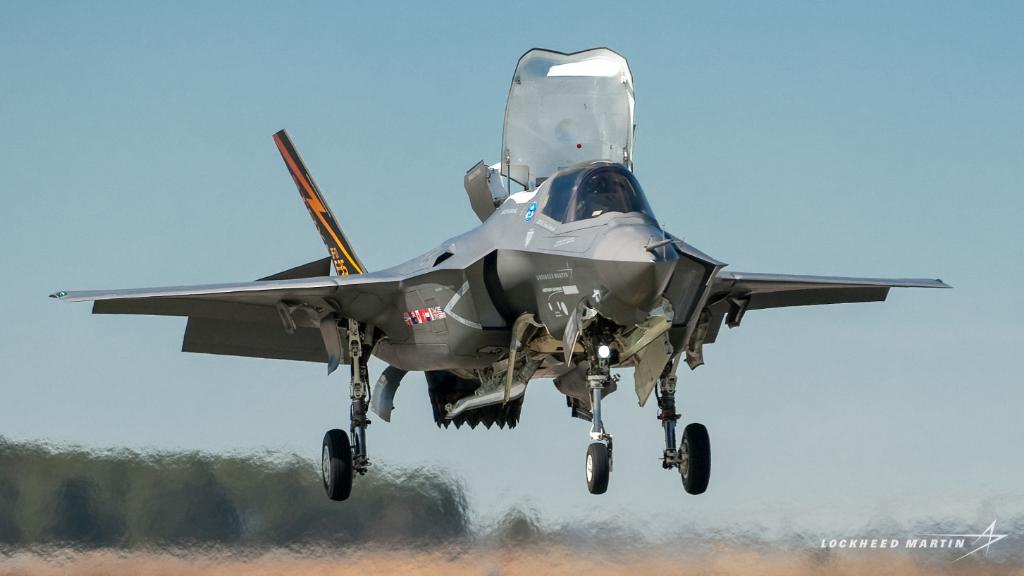After the British Royal Navy’s F-35B crash in the Mediterranean, western allies have expressed confidence to recover the downed jet before Russia beats them to recover and gain critical technological know-how into their uber-sophisticated stealth aircraft.
According to various UK news outlets, a rain cover that was not lifted prompted the recent crash of a British F-35B during takeoff from HMS Queen Elizabeth. Officials suspect the rain cover was sucked into the stealth plane’s F-35B Lightning II engine, forcing the pilot to eject.
The plan is now to recover the wreckage of the F-35B before Russia finds it. US military officer Brigadier-General Simon Doran voiced fear that Russia may try to recover the sunken debris of the aircraft to gain critical insights into its cutting-edge technology.
“We’ll get it first, I promise you,” he said. This confidence was corroborated by NATO’s Deputy Supreme Allied Commander Europe, General Tim Radford, who told journalists on board the vessel sailing in the Mediterranean: “[w]e’re not concerned at all about recovering it.”
“We’re not worried because we are working through the issue at the moment. There was obviously a concern when the plane went down. The pilot is safe, which is the most important thing.”
However, he, alongside other officials, declined to disclose any further details regarding the recovery efforts.
The UK is currently in possession of 21 US-made F-35Bs. These are mostly slated for use on the country’s two modern aircraft carriers — HMS Queen Elizabeth, and HMS Prince of Wales. The F-35Bs, a variant of the F-35, are designed for short take-off and vertical landing (STOVL).

They are 5th-generation aircraft that are provided with the ability to be deployed for a range of missions. The loss of the aircraft, according to Commodore Steve Moorhouse, the commander of the nine-vessel allied strike group that was being led by HMS Queen Elizabeth, was “a hugely unfortunate incident” and “a setback”.
He also said that “[t]he reliability of the aircraft or confidence in it and the project is undiminished.”
F-35B
Lockheed Martin designed F-35B is a single-engine fifth-generation fighter aircraft. It is the first aircraft to combine stealth technology with supersonic speeds and Standard Take-off and Vertical Landing (STOVL) capabilities.
The aircraft is equipped with a refueling probe on the right side of the front fuselage for mid-air refueling. The F-35B’s armament loadout and cockpit layout are similar to the F-35 Joint Strike Fighter (JSF).
A single Pratt & Whitney F135 afterburner turbofan engine with 125kN of dry thrust powers the F-35B STOVL. Furthermore, the engine’s afterburner can provide 191.3kN of thrust. It has a digital engine control with complete authority, a gearbox, and a health and usage monitoring system.
The F-35B is equipped with a 25mm GAU-22A Gatling cannon that can fire 220 rounds per gun. To increase mission lethality, it contains two internal weapon pods and four external underwing hardpoints.
The aircraft has a weapon payload capacity of 6,803kg. It is armed with medium-range AIM-120C AMRAAM air-to-air missiles, air-to-surface missiles, two GBU-32 JDAM guided bombs, six GBU-38 bombs, and munitions dispensers.
Northrop Grumman’s AN/APG-81 Active Electronically Scanned Array (AESA) multi-functional radar is installed on the F-35B. It also holds the AN/AAQ-37 Distributed Aperture System (DAS), Barracuda AN/ASQ-239 electronic warfare system, MADL communication system, and missile warning system.
Russia Hunts For F-35B?
The EurAsian Times spoke to military analysts to understand if the western apprehension about Russia laying its hand on this American-made platform is genuine.
Military author, columnist, and defense analyst Joseph P Chacko shared his view: “Rival countries are interested in each other’s military developments. The relevant special services are always engaged in the extraction of samples of foreign military equipment, including raised and sunken foreign weapons.
Russia has the means to lift sunken objects from the seabed as the country had retrieved its carrier-based aircraft from the bottom of the Mediterranean Sea.

“The F-35 was equipped with top-secret radar and the most modern instruments and sensors that allowed it to fly at supersonic speeds and remain invisible. The British military is now recovering the debris.
The main thing, they believe, is that it does not fall into the hands of the enemy. First of all, the Russian Navy. The open-source information mentions that the F-35 crashed into the East Mediterranean sea.
Philippines-based airpower analyst, Miguel Miranda offered a different take though, “Nothing really [will be gleaned] as the Russians have the same tech. An F-35B was lost? The Russians certainly know what an F-35B can do.”
Moscow-based American political analyst Andrew Korybko shared his assessment, calling it “typical anti-Russian fearmongering meant to advance preplanned geopolitical hostility,”
“There’s no credible indication that Russian subs are racing towards the F-35’s Mediterranean underwater grave, but NATO’s claims that it supposedly is could revive the past years’ hysteria about Russian submarines and the alleged threat they pose (particularly to undersea cables per Western Mainstream Media speculation),” Korybko said.

“The Mediterranean is basically a NATO lake for the most part. It’s unrealistic to imagine that Russia could covertly dispatch a submarine to the F-35’s underwater grave, somehow obtain usable information about it (if not retrieve parts of it), and escape without anyone knowing, chasing them down, provoking an international confrontation, or whatever else.
“The story, therefore, sounds like typical anti-Russian fearmongering meant to advance preplanned geopolitical hostility against the Eurasian Great Power. It’s not worthy to even speculate about what would happen if Russia reached the site first since it’s not credible to even claim that it’s trying to, let alone could do so and get away with it in this NATO lake.”
Some observers pointed out that anything ranging from the lift fan to the engine itself would benefit the Russians as US engines are believed to possess more technological sophistication.
They are of the opinion that if the plane or the wreckage is salvaged, Russia would have a lot to gain as its indigenous aerospace industry has been lagging behind. But, there are others who do not subscribe to this view.
- Aritra Banerjee is a defense journalist who has worked in both online and print media. He has laid an emphasis on issues related to military human resources, tactical psychology, military-media relations, professional military education, and combat fitness. He can be reached on email: aritrareporter@gmail.com.
- Follow EurAsian Times on Google News




